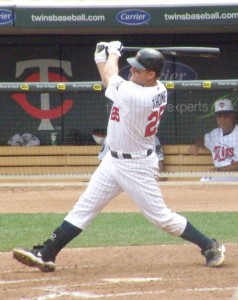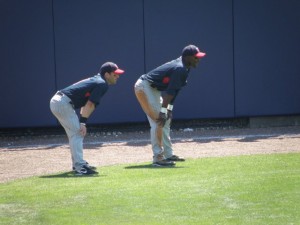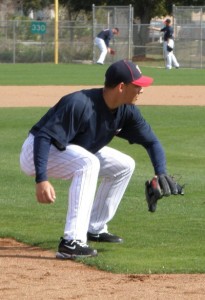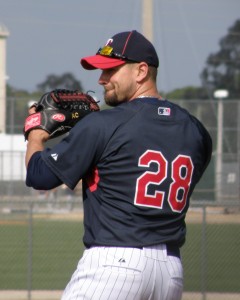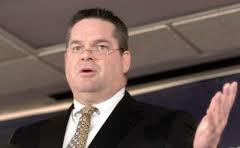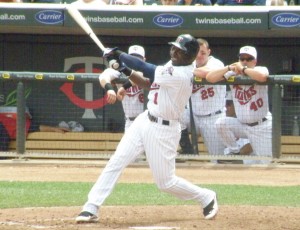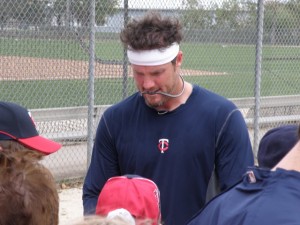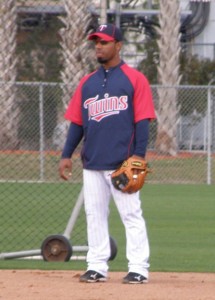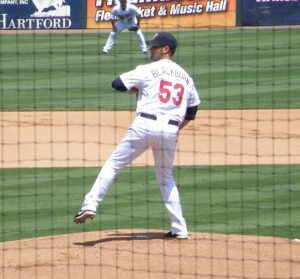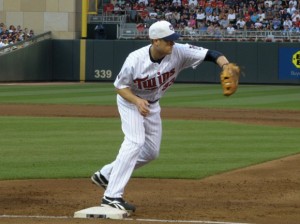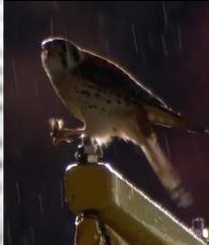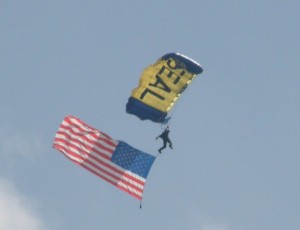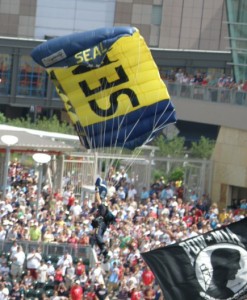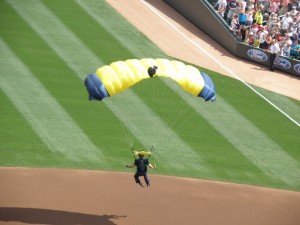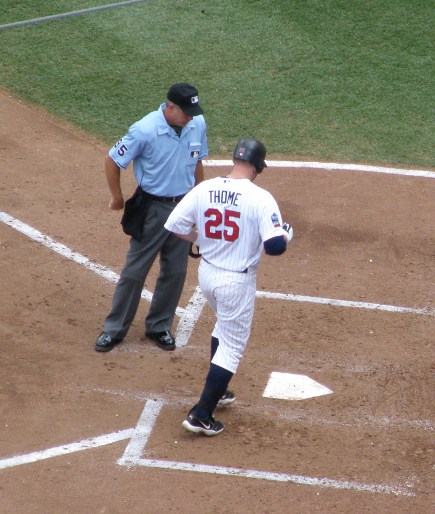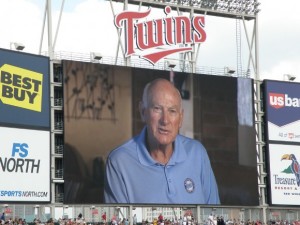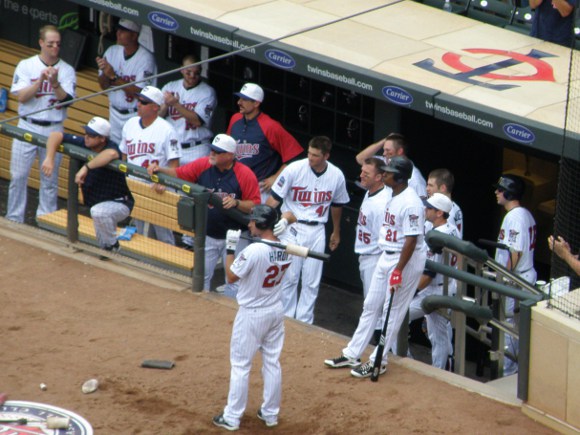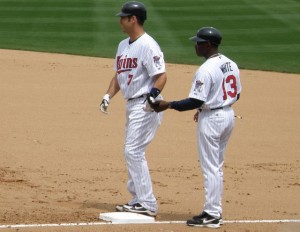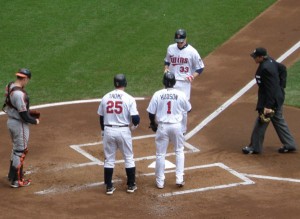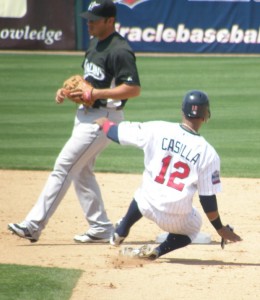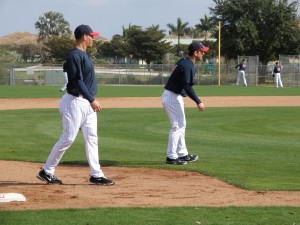Let me start this by saying I like Derek Jeter… at least as much as a person can “like” any New York Yankee. Maybe “like” is too strong a word. I appreciate the kind of ballplayer Derek Jeter has been during his career. Has he been overhyped as a result of being a Yankee? Sure. But he’s done his job well, stayed out of jail, and just generally has appeared to do things “the right way” throughout his career. If he had come up through the Twins system and played his career with our team, I’d probably sign a petition to erect a statue or something.
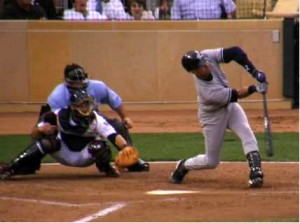 But he’s a Yankee, after all, so I really can’t say I like him… too much. In fact, he’s the Yankees’ captain.
But he’s a Yankee, after all, so I really can’t say I like him… too much. In fact, he’s the Yankees’ captain.
He also just happens to be a 36 year old free agent shortstop with declining defensive skills coming off by far the worst offensive year in his career. In fact, statistically with the bat, he had about the same kind of year JJ Hardy did (outside of the fact that Jeter actually, you know, played in most of his team’s games). Then again, Hardy is eight years younger than Jeter and covers a lot more ground at SS (again, when he’s actually on the field).
There’s a fair amount of discussion among Twins fans, bloggers, and the media (and apparently their manager and GM) concerning whether the Twins should non-tender (or even trade, according to the Baltimore Sun) Hardy. Offering him arbitration might result in a modest increase in his $5.1 million salary. But the Twins want to add more speed to their line up and, since they’re apparently set on having the slowest outfield in professional baseball, they have identified the shortstop position as the spot to target in their quest to upgrade their wheels. In
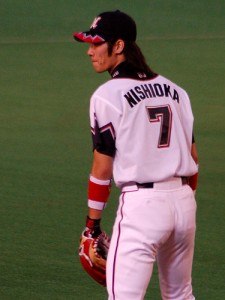
fact, they’re so intent on making that improvement that they’re reportedly shopping overseas, having posted a bid for the rights to negotiate with Japanese batting champion, Tsuyoshi Nishioka. There’s no doubt that replacing Hardy and Orlando Hudson with Nishioka and Alexi Casilla would improve the Twins footspeed. Whether it would improve anything else is certainly a fair topic for debate.
Meanwhile, over in the Bronx, they’re talking money with Jeter and his agent. Jeter pocketed $21 million in 2010, the final year of his contract. Now, apparently, the Yankees and Jeter are playing a little game of “chicken”. Jeter and his agent don’t think he should really have to take much, if any, of a pay cut and should get at least a four year extension… if not longer. The Yankees, on the other hand, say they’re willing to overpay for Jeter (after all, they overpay for everyone else), but only for three years and for something less than $20 million per year.
This is where I have to admit that, while I occasionally sound off about MLB being complicit in a system that allows the Yankees to be able to spend twice on payroll what most teams can afford, it’s not really quite as bad as that. It COULD be really bad, if it weren’t for the fact that the Yankees owners are morons who almost seem intent on overpaying for every player they want by focusing on what those players have done in the past, rather than what they’re likely to do in the future.
If the Yankees were smart, they’d tell Jeter, “We’ll pay you $35 million over the next three years. Even that’s overpaying, but you’ve been a good Yankee and we want to acknowledge that. Feel free to go shop around and if someone offers you more, give us a call and we’ll talk about upping our offer. But we aren’t going to negotiate against ourselves.” They’d probably get him for that price, too. Instead, he’s going to end up being paid close to $20 million a year until he’s a 40 year old shadow of himself. Hell, they may not have to erect a statue of Jeter. He’ll be his own statute.
As a matter of fact, if I owned the Twins (and had as much money as the Pohlads do), I’d be on the phone with Jeter’s agent, offering him $70 million for four years. Why? Because we all know there is no… friggin… way… that the Yankees can NOT bring Jeter back. Knowing that, why not run that price up to the point where the Yankees not only overpay, but grossly overpay for Jeter? In the worst case scenario, the Yankees balk and you end up with him on your roster. That’s not ideal, but at least you have a right handed DH, plus you’ve pissed off virtually every Yankee fan in the country. That’s gotta be worth something! If you really feel you have to recoup some of the cost, though, I suppose you could always dress him up in his old Yankee uniform and put him in a dunk tank out on Target Plaza on days he’s not in the line up. That ought to bring in a few bucks.
But that’s how teams with $100 million payrolls compete with the guys who spend $200 million… they make sure the rich team has to pay twice what their players are worth to anyone else. They make sure they commit $20+ million a year for six years to starting pitchers who have virtually no chance of being worth that money every season of the contract. That’s why I’m glad the Rangers and Nationals are talking about throwing some big offers at Cliff Lee. Why let the Yankees have him for anything close to what he’s actually going to be worth? Let him be their next AJ Burnett or Carl Pavano over the next several years. Meanwhile, opposing teams can just keep slapping ground balls in to left field past the $50 million worth of statues the Yankees will be trotting out to 3B and SS for the foreseeable future.
And as long as the Yankees have Jeter attached to their infield like a ball and chain, the Twins front office can go shopping overseas for a guy like Nishioka, without having to be concerned about the Yankees overpaying for the rights to negotiate a contract that would overpay him to play in New York.
God bless Derek Jeter! Take ‘em to the cleaners, Captain!
-JC

